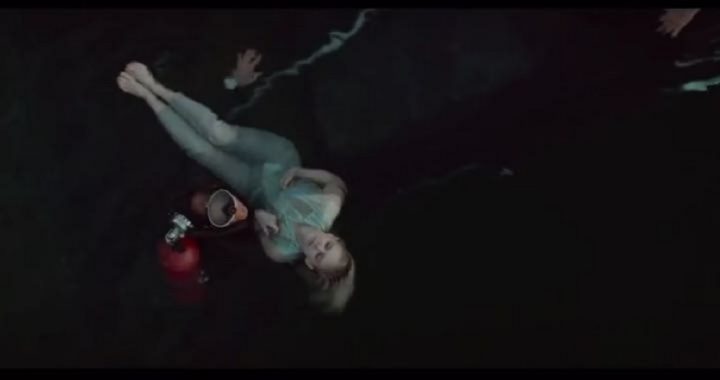
No normal-length movie could possibly cover the complexities of the event in the summer of 1969, known simply as “Chappaquiddick,” after the island off the coast of Massachusetts, where Senator Edward Kennedy’s presidential ambitions vanished after he left a young woman, Mary Jo Kopechne, to die in his submerged Oldsmobile in a tidal pond. Yet, this film, through the expert cinematic efforts of director John Curran and screenwriters Taylor Allen and Andrew Logan, comes as close as one can expect from a movie attempting to explain an event that is still shrouded in mystery.
The New American spoke to Robert Bruguiere, then a patrolman for the Edgartown Police Department, and Chief Jim Arena, both portrayed in the movie, for their reactions to the movie. At the time of the incident, Bruguiere was a teacher, taking a summer job as a patrol cop. (Martha’s Vineyard, upon which Edgartown was located, experienced a huge increase in population during the summer months because of tourism and, accordingly, hired additional officers.)
Bruguiere was present when Kennedy’s car was pulled from Poucha Pond, and noted to The New American, “The movie had scenes that did not happen at the bridge where I was involved. The movie was not an Academy Award prospect, by any means. I agree it was just a three-star production.”
Chief Arena also agreed that the movie changed up some of the incidents, although overall he had a high opinion of the film. He said he himself was portrayed fairly. When we asked him about the scene in which Kennedy patted him on the shoulder, telling him that he was doing a great job, Arena laughed and said Kennedy never did or said that. But overall, Arena thought the movie got it about right — at least the part of which he was aware.
Kennedy’s legislative aide Bob Shrum made it clear to People magazine that he did not care for the movie, stating: “There have been more than 20 books and countless articles written about the accident at Chappaquiddick, some attempting to find the truth and others trafficking in conspiracy theories. This movie pretends to do the former; in reality, it does the latter, which does a disservice both to the victim and the truth.”
One of the “Boiler Room Girls,” who, like Kopechne, worked for Senator Robert Kennedy’s presidential campaign in 1968 and was invited to a party on Chappaquiddick with Kennedy and other men, Esther Newberg, now a literary agent, told People that it was “frustrating” to read the screenplay and “see one thing made up after another, and in no way can they attest to any of it because they weren’t there and they didn’t speak to anybody who was.”
Of course, Newberg wasn’t there either when Kennedy ran off the bridge, killing Kopechne. But she could have told Chief Arena and other investigators what happened at the party (that Kennedy euphemistically called a “cookout”). Instead, she and the others skipped out of town, and have been reluctant to speak about that night in the almost 50 years since.
Mary Jo’s cousin, Georgetta Potoski, who was close to Kopechne, spoke to Martha MacCallum of Fox News about the movie. She called it “very powerful,” adding, “It was very emotional and it was very sad. But we did like the movie. We thought they did a masterful job with it. I thought Jason Clark was — we really thought you were watching Ted Kennedy. And I think Kate Mara was darling and sweet. And I think it captured Mary Jo’s personality.”
Potoski told MacCallum that the movie “walked a fine line with some of the scenes, so as not to imply the wrong thing.” For years, exactly why Kennedy and Kopechne left the party alone and were apparently gone for over an hour before they plunged into Poucha Pond, has led to speculation as to what the two were doing all that time. As Potoski implied, the movie takes a middle ground between them just talking about his brother’s assassination and Ted’s own political future, or a romantic encounter.
After MacCallum showed Potoski a film clip from the movie, which portrays Kennedy saying to his advisors, “We tell the truth, at least our version of it,” she asked her for a reaction. Potoski said, “That was hard to watch, but not unknown to most people who lived through the Kennedy era.” Potoski said that Kennedy had “plenty of chances” to make the “right decision,” but “just didn’t do it.”
Potoski told MacCallum that it was very hard on Mary Jo’s parents when they were told a few years later by Jim Ferrer, the scuba diver, that she could have lived up to three hours in the air bubble in the car. “Her parents’ reaction was as if they had lost her all over again,” Potoski recalled. “It was awful.”
Potoski also said that there had been a “lot of suppression of books and stories” involving the case, and that she was glad that a movie had finally been made on the incident. “When we saw the film, the scenes that they had photographed were just like the scenes that had been running through our heads for 50 years.”
“They did a great job,” Potoski said, summarizing her opinion of the movie.
Unfortunately, many of those who were portrayed in the movie, including Senator Kennedy, have died, and can no longer give their impressions of what happened then and of the movie’s version of events. Most sadly, Mary Jo Kopechne is no longer here, because she was left to die in Kennedy’s car, suffering what must have been an agonizing and terrible death.
Image: Screenshot of official Chappaquiddick movie trailer



